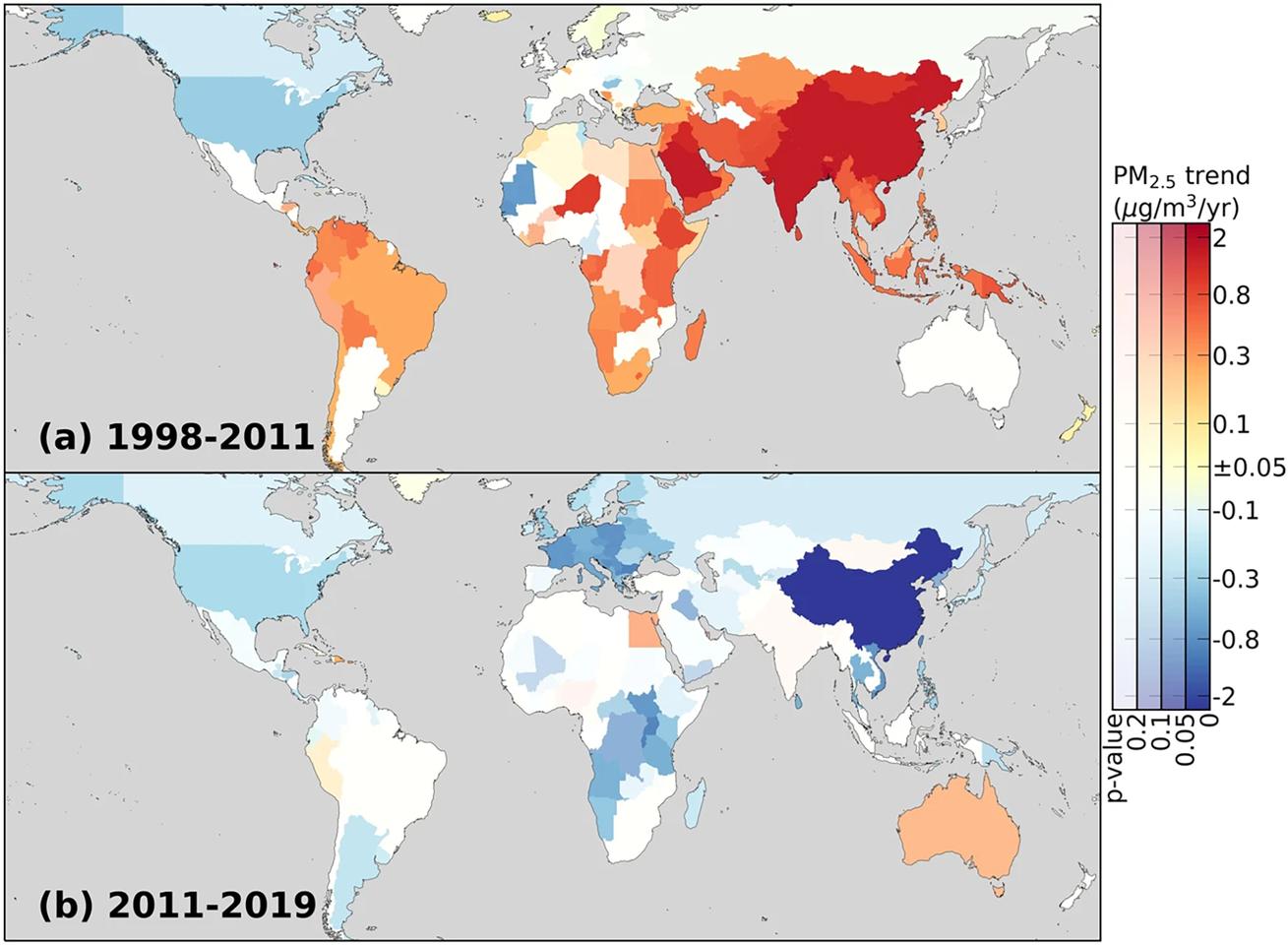While there may be a lot to worry about when it comes to climate change, a new study has found that we’re doing something right when it comes to air pollution. An analysis of global data has found that exposure to fine particulate matter, a leading environmental health risk, has fallen.
Exposure to fine particulate matter, called PM2.5 because its particles are 2.5 micrometers or smaller, is responsible for millions of premature deaths, reduced life expectancy and social costs globally. According to research, nearly half of global PM2.5-attributable deaths are due to traditional sources of air pollution, such as fossil and solid biofuel combustion, which can be mitigated.
And some countries have employed strategies to mitigate the production of PM2.5. But have they been effective? Researchers led by Washington University in St. Louis analyzed data from 1998 to 2019 to see how the world was faring regarding PM2.5 exposure and its effects. The results are promising.
“The importance of PM2.5 as a leading risk factor for human health motivates assessment of its long-term changes,” said Randall Martin, one of the study’s co-authors. “We sought to analyze our satellite-derived PM2.5 estimates for insight into global and regional changes in PM2.5 exposure and its health effects.”
The researchers’ analysis showed that global, population-weighted PM2.5 exposure, related to both pollution levels and population size, increased from 1998 to a peak in 2011, before steadily decreasing from 2011 to 2019.
“Before this work, there was a knowledge gap regarding quantitative local/regional contributions to global population exposure to PM2.5 and its changes,” said Chi Li, lead author of the study. “We developed a new regional decomposition approach that jointly considered pollution level and population size, and from that, we depicted the first-ever time series of regional contributions to global PM2.5 air pollution.”
The researchers found that, overall, there has been a reversal in the pre-2011 PM2.5 increase. Before 2011, significant growth in PM2.5 exposure occurred widely, mainly in Asia, Africa, and South America. But between 2011 and 2019, more areas of the world showed significant decreases, including Europe, the Asia Pacific, Southeast Asia, Russia, Sub-Saharan Africa, and, most notably, China.

Li et al./Washington University in St. Louis
“Rigorous air quality management in China, which has been most pronounced since 2013, turned out to be the biggest contributor to this global reversal,” Li said. “More than 90% of the reduction of global mean exposure from 2011 to 2019 is from China, according to our regional attribution. This result was astonishing when it was derived, but it could be explained well by the rapid reduction of PM2.5 concentrations due to China’s mitigation efforts, which benefit nearly one-fifth of the global population.”
The researchers also identified a stagnation in global PM2.5-related deaths, attributable to the downward trend in pollution exposure. Globally, yearly PM2.5-attributable death increased by 0.97 million from 1998 to 2011 and decreased by 0.70 million afterwards. Their calculations revelated that reductions in global PM2.5 exposure from 2012 to 2019 contributed to delaying 2.65 million deaths that otherwise would’ve been attributable to that exposure.
“By combining PM2.5 data with health and exposure-response models, we also revealed that, despite the recent sustained reduction of global PM2.5 pollution, population aging and growth are now the main challenges in alleviating PM2.5 health impacts,” said Li. “Reducing the same amount of PM2.5 now will have stronger health benefits than it would have 20 years ago, a globally prevalent phenomenon highlighted in our study.”
The researchers say the world needs to continue its good work.
“There is a need to continue to sustain and develop global monitoring capabilities for PM2.5 both from satellite, but also from ground-based measurements,” Martin said. “The successes in PM2.5 reductions serve to demonstrate the benefits of PM2.5 mitigation efforts, and to motivate further mitigation.”
The study was published in the journal Nature Communications.
Source: Washington University in St Louis
Source of Article